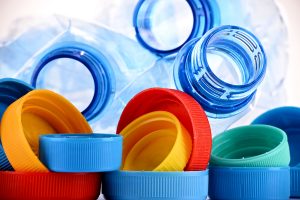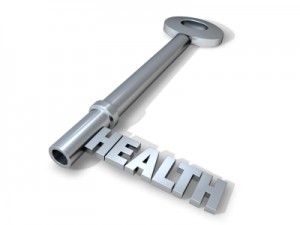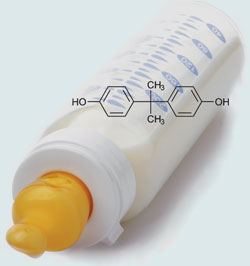After a lot of bad press as a hormone disruptor we know we should avoid BPA. Bisphenol A (BPA) is a synthetic compound that has been used since 1957 in plastic bottles and as lining inside cans, so they don’t rust.
Study showing why we should avoid BPA
Recently BPA has again hit the media as a new study has shown that there are things we can do to avoid high concentrations of BPA by changing our lifestyle.
This media report is based on a scientific study that Jennifer Hartl and coworkers have done. They followed patients who had consumed various items known to be contaminated with BPA and measured their urine BPA concentration 24 hours later. 9% of their study participants had consumed one can of food or more, while 2% had consumed 2 cans of food or more on the previous day. Researchers compared one can of food consumed to none. They found 24% of higher BPA concentration in the urine. With two cans of food consumed versus none they found that 54% of higher BPA concentration was found in the urine.
Researchers compared one or more specific types of canned foods to none consumed. Some interesting differences emerged. Canned vegetables and fruit showed 41% higher BPA in the urine test. Canned pasta measured 70%, but canned soup 229%. The researchers also tested canned beverages. None of them caused BPA elevation in urine tests.
What BPA does
93% of Americans 6 years and older have BPA in their urine indicating that it is in our bodies, and the body is attempting to get rid of it. It is known as an endocrine disruptor, but how effective BPA is as an endocrine disruptor remains to be seen. This link describes that BPA is 800-times weaker as an estrogen blocking substance in comparison to soy products.
There are two mechanisms of action where BPA interferes with normal body function.
- BPA functions as a weak estrogen and binds to the nuclear estrogen receptor. This partially blocks the action of the body’s own estrogen function.
- There is also a membrane based estrogen receptor on body cells that is involved in cell signaling and gene expression. BPA can add methyl groups to DNA, which silences gene expression. This latter mechanism is much more sensitive to BPA (probably by a factor of 1000-times) than the traditional effect on the nuclear estrogen receptor.
It is these newer findings that are of concern with regard to fertility in males. It is important that babies are not fed using regular plastic bottles, but rather that BPA-free bottles or glass bottles are used to avoid BPA exposure. Babies and children are particularly vulnerable to the hormone blocking effects of BPA as well as the interference of brain development and maturation by BPA.
Manufacturing of BPA free plastic
In an attempt to avoid BPA in manufacturing of plastic bottles and food containers industry has used other chemicals, among other materials something called BPS. This stands for “Bisphenol S”. A research paper found that BPS is an endocrine disruptor as much as BPA is and causes fat cells to grow rapidly. According to the author of this publication it may be partially responsible for the obesity wave. The author of this study recommends using glass containers as much as possible to avoid transfer of either BPA or BPS to food that comes in contact with plastic materials.
Avoid BPA from receipts
Have you ever thought that you may be able to absorb BPA through your skin from receipts when you buy items at a store? Yes, the machine of the checker prints receipts on heat sensitive paper. It contains BPA on it, which the body absorbs through the skin. If you scratch the printed part of the paper and it leaves a dark mark, it is thermal paper.
In this study workers were handling thermal receipts for four hours and their urine was monitored for BPA the following day. Another group was handling thermal receipts for 8 hours. In the first group that had exposure for 4 hours the BPA concentration in the urine rose to three times higher than the base rate. The second group exposed for 8 hours had BPA levels that were five times higher than the base rate. For comparison researchers measured another group that was wearing surgical gloves and their BPA concentration in the urine showed no change from the baseline.
I have changed my way of shopping. I think about whether I would ever want to exchange the item I just bought. If not, I tell the clerk that I do not want a receipt and he throw it out.
How you can avoid BPA exposure
- Do not use plastic containers to heat food in a microwave, use glass containers instead.
- Avoid all plastic food containers that have a “7” printed in a triangle on the bottom. Among these is a significant number that will release BPA over time.
- Avoid canned soups, such as tomato soup or canned mushroom soup. The paper reviewed at the beginning of this review showed these led to the highest BPA readings in urine tests the following day.
- Keep in mind that 2 out of 3 cans in supermarkets are positive for BPA. Eat as much fresh or frozen food as you can, but avoid canned food.
- Many canned beverages (such as beer, soda, juice) are acidic; this means that their thermal processing requirement is much different requiring lower temperature where BPA does not leach from the bottle into the stored fluid. These drinks when tested were BPA free.
- Among drinking water containers the following have been tested: Aquafina, Dasani, Arrowhead, Fiji and Kirkland Signature bottled water from Costco. They were all BPA free. Most water companies have now switched to BPA free containers, but avoid the containers with the “7” in a triangle as already stated, as some of them may leach BPA into the bottle content.
- Use fresh, unpackaged foods as much as possible. For instance, fruit and vegetables can often be had unpackaged. Check the packaging, check the type of plastic and if not sure, don’t buy it.
- Whenever possible, avoid handling thermal receipts; if possible, get an email receipt instead to avoid BPA exposure through the skin.
Conclusion
There has been a silent revolution where more and more plastic and resins have entered our lives. With it came the exposure to BPA, which is an endocrine disruptor. This may have consequences regarding male fertility. There is a change of fat metabolism in both sexes with weight gain as the end result. It also interferes with brain development in the fetus and in young children. BPA behaves like a cell poison.
In this blog I have shown ways to reduce exposure to BPA. We need to eat more fresh vegetables and fruit that merchants sell not in plastic. If merchants sell food in plastic or plastic containers, the wrapping material must be BPA and BPS free. The FDA and/or EPA must make labeling of containers mandatory. Whenever possible return to glass containers that are BPA free. Also bear in mind that heating plastics can release toxins. If you are heating food in a microwave, do not use plastic containers. Instead use glass or ceramics. It is common knowledge that they are safe!
Additional reference (Questions about BPA answered):
http://www.niehs.nih.gov/health/assets/docs_a_e/bisphenol_a_bpa_508.pdf








